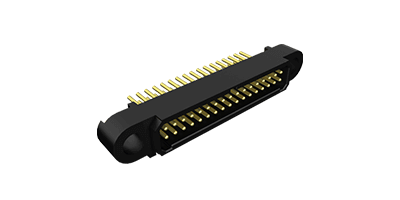What Is a Rectangle Connector?

A rectangle connector is a square-shaped connector that can be used for a wide range of applications.
Examples of rectangle connectors include D-SUB terminals for transmitting video signals, DVI terminals, HDMI terminals, and DisplayPort terminals. These connectors vary in shape and size.
USB terminals, which are used to connect PCs, smartphones, and other devices for signal transmission and peripheral device connection, often employ rectangle connectors. These come in various shapes and sizes.
The RJ-45 connector, used for Ethernet signal transmission, also falls under the rectangle connector category, despite its slightly unique shape.
Uses of Rectangle Connectors
Rectangle connectors, such as D-SUB connectors, were once the mainstay for transmitting video signals. However, with digitalization, they are now being replaced by HDMI and DisplayPort connectors, via DVI terminals.
The DVI terminal, a successor to the VGA standard, supported analog RGB and was the sole digital standard before the introduction of HDMI. However, current manufacturers are not developing devices with this standard.
DisplayPort is a digital interface standard developed as a replacement for DVI.
USB connectors, another type of rectangle connectors, are widely used for connecting PCs and smartphones to various devices such as drive units, USB memory devices, printers, and other peripherals.
Principles of Rectangle Connectors
Representative products of rectangle connectors include HDMI and USB connectors.
HDMI connectors transmit digital video and control signals. They are used for connections such as between a TV and a DVD/BD/HDD recorder or an AV amplifier.
For example, when connecting a TV to a recorder, the recorder’s video signal is used for playback on the TV. HDMI also transmits control signals, known as HDMI-CEC (Consumer Electronics Control). This feature allows a TV’s remote control to simultaneously operate a connected recorder.
With HDMI-CEC, turning on the TV with its remote control can also power on the recorder, and vice versa. It is also possible to use the TV remote to select and play content from the recorder.
The HDMI standard, including the HDMI-CEC subset, has been standardized by manufacturers’ organizations. Therefore, basic commands are consistent across different brands.
USB connectors, on the other hand, are primarily used for transmitting digital data, whereas HDMI focuses mainly on video signals. USB standards, like HDMI, are standardized by industry groups.
USB 1.0, first standardized in 1996, has evolved over time, culminating in the release of USB4 in September 2019. The maximum transmission speed of USB 1.0 was 12 Mbps in half-duplex mode, but USB4.0 offers speeds up to 40 Gbps in full-duplex mode.